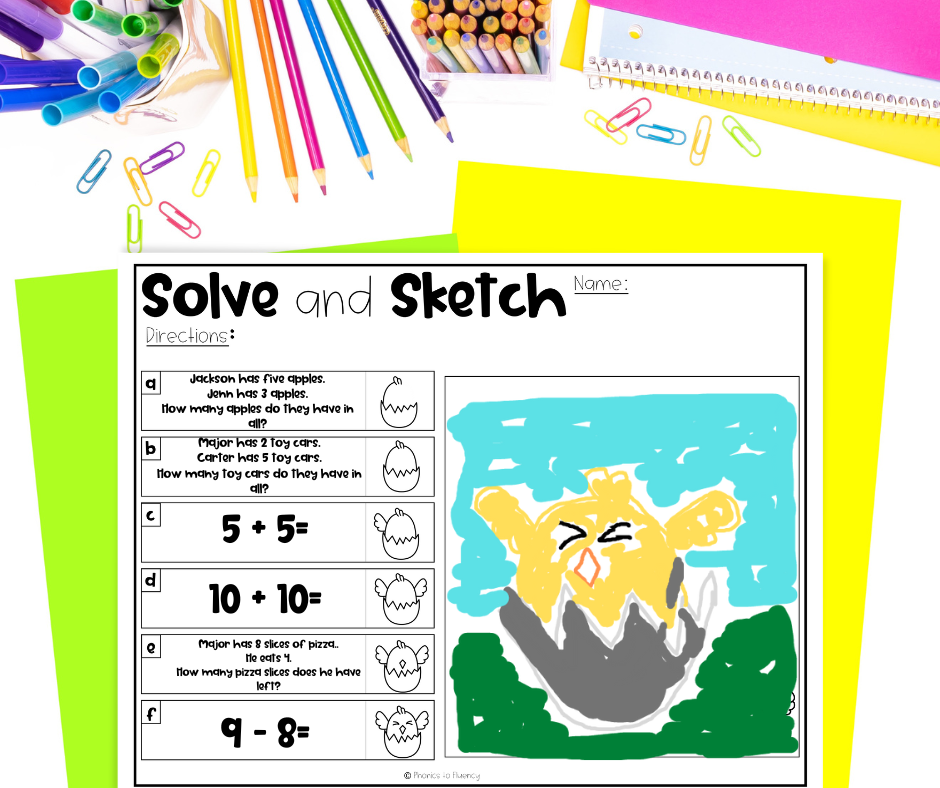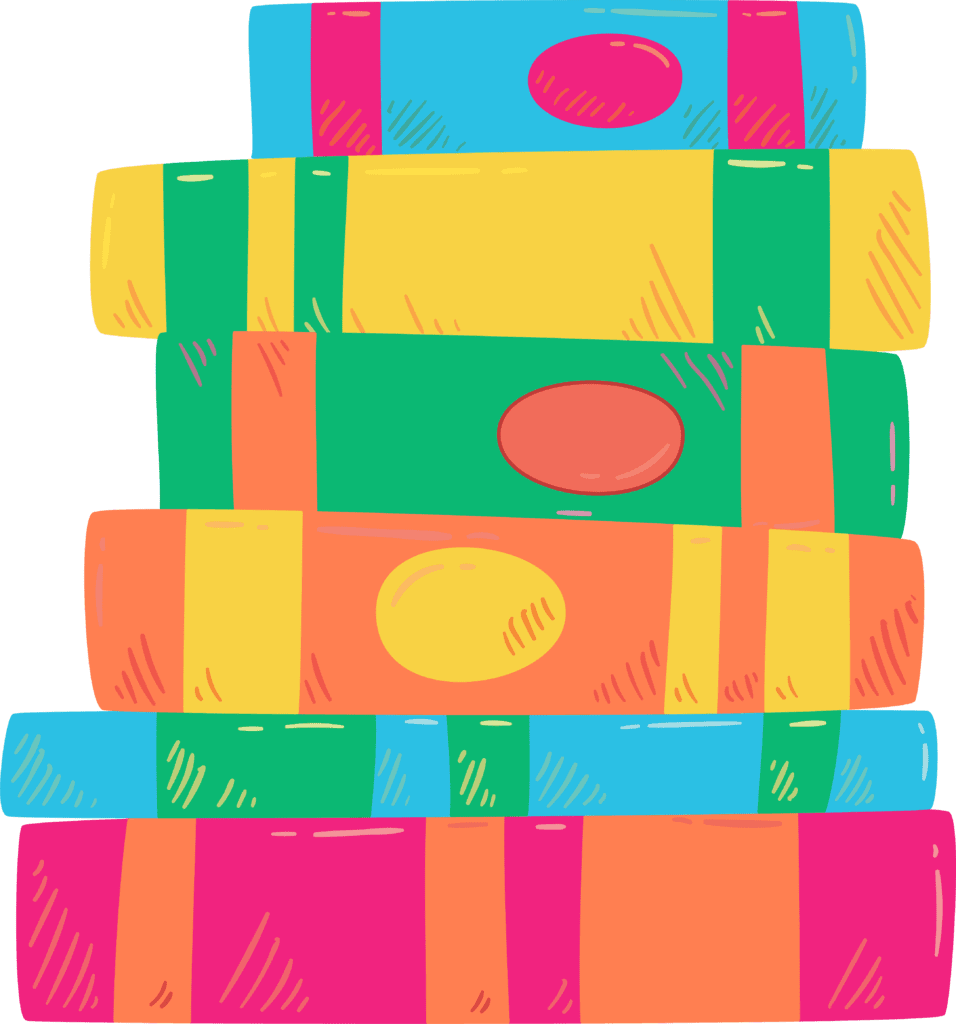
1, 2, 3 come and count with me! We talk a lot about phonics and literacy when it comes to kindergarten students. However, kindergarten is about a lot more than just phonics and reading. Students need to do counting activities for kindergarten as well as other math activities for kids throughout the school year. If you’re not sure what your students should be working on in math or you need some stellar activities, you’re in the right place! Keep reading for math topics and activities to rock your kindergarten classroom.
There is a strong focus on phonics and the Science of Reading when it comes to kindergarten. So much so that people start to forget all about math! However, number awareness is just as important as reading. When you use math activities for kids in kindergarten, you are strengthening their ability to think critically and problem solve. In addition, studies have shown that learning basic math skills in kindergarten can help with academic success in the future.
When we talk about math activities for kids in kindergarten, what we want to make sure we instill first and foremost is number awareness. Number awareness means students can identify the number and write the number independently. You can increase number awareness by doing math activities for kids like playing Bingo. Now, this won’t work until your students know at least 24 numbers. Once your students are ready to practice finding numbers, you can use a free bingo generator and simply put in numbers. This also works once you want students to be able to read the numbers as sight words.
While you are working on number recognition, you can also work on counting. This skill is important for kindergarten students because it is one of the basic skills needed to do harder concepts later on like graphing. Once students can recognize numbers and can count, you can start introducing some basic math pieces like addition and subtraction. If you use math activities for kids daily, you can eventually move up to measurements and graphing.
Number awareness is the first step in learning math skills. Number awareness is the act of students recognizing numbers in their written form. There are so many fun ways to create number awareness like Bingo. To create number awareness, you can play bingo like discussed above. Playing bingo is a fun game students can do as a whole group and it offers repetition which helps students solidify their ability to recognize numbers. Beyond bingo, you can also use manipulatives, and this fun Pocket Chart Activity that will help students with letter and number recognition.
When students understand what their numbers look like, you can work on number formation by practicing counting various objects and writing the numbers down. When you work on counting, you can use manipulatives like cubes or math junk like erasers or nuts and bolts to count. You can also have students go on a scavenger hunt to find various objects around the classroom to solve a problem. If you use math centers or bell-ringers, this Year Long Counting Bundle has everything you need for the year. With these math activities for kids, your students will get great practice and be counting pros by the end of the year.
Number recognition and counting are great, but to really get into math topics for kindergarten, you want to make sure you are going deeper! You can do this by teaching your students the power of numbers. Talk about how you can add and subtract numbers (but we aren’t going to stop there)!
When you first start adding numbers, you can do basic activities that involve counting different colored objects. For example, get skittles or m&ms and have students choose two of the colors. Then have them add those numbers together. To do this, students can use a ten frame or a number chart to help them.
Once your students have had practice with adding and subtracting, you can use Directed Draws to help practice adding and subtracting skills. These editable direct draw math activities for kids gives you 132 different pages that students can use to practice their basic math skills. Each direct draw offers a new picture for students to create and then color. Using interactive worksheets with students during centers, for early finishers, for morning motivators, or during morning meetings is a great way to use student time.
When your students go beyond adding and subtracting and you’re ready to give them more of a challenge, you can jump into measuring and graphing activities. You can teach students how to measure with fun math activities for kids outside the classroom. Have your students measure different parts of the playground or various objects in general. You can also have students graph the growth of grass that you grow in science class. Doing activities with measuring and graphing is a great way to enhance students’ understanding of math as well as science. Check out this Year Long Graphing Worksheet Bundle that will help your students with critical thinking skills asking them to compare and contrast. Making this a multi-curricular activity that is engaging.
Math can be a struggle for many students. When you turn it into a game or a fun activity, your students won’t focus on how “hard” math is for them. Instead, they will be having too much fun to quit! You can do this for all math topics including: number recognition, number formation, counting, adding, subtracting, measuring, and graphing. Make sure you check out all the great resources in this blog to keep your students engaged all day!
Math is an important part of the day. Using math activities for kids is a great way to engage your students and give them important skills they need to grow academically. By using Directed Draws and more, your students won’t even realize how much fun they are having while learning and practicing math.

Phonics to Fluency

It brings me so much joy creating high-quality, hands-on, research based Literacy and Math resources that are both engaging for students and save YOU time!

Let me give you some time back!
Just tell me where to send them…


I’d love to connect and get to know more about you!
Join the Phonics to Fluency community and connect, collaborate, and grow alongside other dedicated K-1 teachers and homeschool parents in our exclusive Facebook group.
© 2023 PHONICS TO FLUENCY | ALL RIGHTS RESERVED | SITE DESIGN BY AMY REIS CREATIVE
Subscribe to get a coupon code for 15% off your first purchase. PLUS receive regular updates and offers in the Phonics to Fluency newsletter,